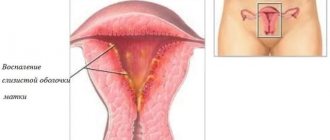Health problems can often be recognized by the condition of the hands, fingers and their sensitivity. It is the hands that can tell you what you should be wary of and what you should focus your attention on, as well as which doctor you should immediately contact. And so, if you feel that your fingertips are burning, and systematically, make an appointment with a therapist, as this can be a symptom of completely different diseases of systems and internal organs.
First of all, you need to consult a doctor and take blood tests, then you need to visit a neurologist and endocrinologist (to check the state of hormonal levels). The pads on your hands can “burn” for a number of reasons, from allergic reactions to diabetes. Often this is an indicator of neuropathic diseases: Raynaud's syndrome, osteochondrosis and intervertebral hernia, pinched nerve of the cervical spine, or displacement of the vertebra(s), carpal tunnel syndrome. In this case, after consulting a doctor, the necessary procedures and tests will be prescribed, from massages and exercises on the horizontal bar, to antibiotic injections and surgical intervention. A neurologist can give a referral to a vascular surgeon, prescribe x-rays or other examinations, recommend suitable ointments and, if necessary, painkillers.
Why do you feel like your fingers are on fire?
During sedentary work, problems of a neuropathic nature, manifested by burning of the fingertips, can be prevented by regular exercise or changing the position of the upper limbs. It is possible that keeping the hands in the same incorrect position for a long time causes symptoms, as if the fingertips are burning, due to a slight pinched nerve. The problem may lie on the surface; unpleasant sensations, as a symptom of a neuropathic disease, can even be caused by smoking and simple lack of sleep.
Problems with the thyroid gland and hormonal levels are also expressed by a burning sensation and sensations of burning hands in the area of the pads on the fingers. The endocrinologist will prescribe the necessary tests, check the levels of hormones, vitamins, and blood sugar. Examinations will help determine the possible cause of burning fingertips. It may be necessary to change the diet, add a complex of vitamins and minerals, saturate the blood with red cells (in case of anemia), reduce or completely eliminate foods rich in glucose (in case of diabetes or high blood sugar). Diet and proper nutrition, an additional vitamin complex, in particular taking vitamin B, the lack of which can cause discomfort in the fingertips.
Another reason that the fingertips burn may be excessive physical activity, for example, work or sports. Review your schedule; perhaps you are not getting enough rest or spending time without fresh air, overexerting yourself physically and mentally.
If you have gone through all the doctors and passed the necessary tests, and have not identified any diseases or symptoms, and your fingertips continue to systematically burn and burn, increase the duration of sleep, the amount of fruits and vegetables in your diet, and spend time in the fresh air more often.
The cardiovascular system can also tell you about diseases through a burning sensation in your fingertips. It is necessary to make an appointment with a cardiologist, as well as undergo a series of tests, a cardiogram, and undergo an ultrasound of the heart. Then you should contact a vascular surgeon to find out why your fingertips are burning. Only by going through a series of tests and examinations can the cause of the disease or its symptoms be identified. Self-medication will not lead you to the desired conclusion and result, since it is necessary to deal with problems comprehensively and carefully, which cannot be done without the proper knowledge and experience.
Causes of burning sensation
The factors that contribute to the appearance of burning sensation in the fingers are quite varied. They are often associated with diseases of the musculoskeletal system, nervous and cardiovascular systems, as well as other reasons.
Possible causes related to bones, joints and muscles
A person’s hands are closely connected to the spine, so in many cases, burning of the fingers is associated with diseases occurring in its parts.
Unpleasant sensations in the hands are observed in diseases such as:
- osteochondrosis;
- intervertebral hernia;
- vertebral displacement;
- pinched nerve in the cervical spine;
- Raynaud's disease.
Rheumatoid, reactive arthritis, rheumatism, arthrosis are characterized by the development of an inflammatory process. The joints feel like they are burning, the skin at the site of the lesion turns red and swells.
There is stiffness in movements, which is more pronounced in the morning after sleep. A pinched nerve in the cervical region, in addition to burning, is accompanied by additional neurological symptoms in the form of tingling, numbness and pain. Inflammation of the arm muscles - myositis - causes a burning sensation accompanied by pain in the limb.
The cause of a burning sensation in the right hand may be carpal tunnel syndrome . The syndrome develops as a result of frequent, repeated flexion-extension movements of the wrist. It is observed in many office workers who work on computers and musicians. Constant compression of the median nerve provokes swelling and inflammation of the tissues surrounding it, as a result of which the fingers become numb and their motor activity decreases.
Other reasons
Doctors pay special attention to the burning sensation in the fingertips of the left hand. This symptom signals an increase in blood pressure, damage to the heart muscle, which often results in myocardial infarction. Also, such a symptom indicates improper blood supply or disruption of blood flow to the brain areas, i.e. stroke.
Patients say that their fingers burn with multiple sclerosis. This is a degenerative disease of the nervous system that is difficult to treat.
Pathology of the thyroid gland and hormonal imbalances are also expressed by a burning sensation in the fingers. If you have diabetes and a burning sensation in your hands, it means that the concentration of glucose in the blood has begun to increase. When these symptoms are accompanied by headaches, thirst and uncontrollable appetite, you should consult an endocrinologist. A sharp increase in glucose levels leads to diabetic coma.
Note! It is especially dangerous if the burning palms have acquired a reddish tint. If you press on the skin, the area turns white and then returns to red. Most often this is a sign of hepatitis or cirrhosis of the liver.
Fingers also “bake” in case of allergic reactions. The phenomenon is observed after contact with household chemicals or cosmetics containing hazardous components. Less commonly, the reason lies in taking certain pharmacological drugs or eating foods that contain allergens.
Burning pain in the arms: hands, fingers, joints and muscles
Burning pain in the hands can occur for various reasons. This may be inflammation, lack of blood supply, destruction of large and small joints.
But most often, burning pain in different parts of the arm is caused by damage to the nerve fiber.
Tunnel syndromes, brachial plexitis, complications of cervical and cervicothoracic osteochondrosis are just some of the potential diseases that can affect the nerves.
Burning pain in the left arm may be a signal of trouble in the blood supply to the myocardium. This may be a clinical symptom of the onset of an acute heart attack. In such situations, the patient must be provided with cardiac care.
If, against the background of general well-being, you suddenly have a severe burning pain in your left arm, and it does not go away within 10 to 15 minutes, then take a nitroglycerin tablet under your tongue.
If there is no improvement after 5 minutes, call an ambulance.
In most cases, burning pain in the right arm is a symptom of nerve damage. The upper limb is innervated by the brachial plexus.
It is formed by branches of the radicular nerves C4-C7 and T1.
Responsible for the innervation of soft tissues (skin, muscles, blood vessels, ligaments and tendons, subcutaneous adipose tissue) in the shoulder girdle and free upper limb.
The brachial plexus is divided into two parts. One of them goes to the collarbone area, the other goes down to the axillary area. It is the subclavian branch that is responsible for providing innervation to the arm. In the axillary fossa the branch splits into three bundles.
Further towards the hand they go separately and branch further.
Of the seven short branches of the brachial plexus, only the suprascapular nerve (responsible for the articular capsule of the shoulder) and the axillary nerve (responsible for innervation of the skin of the anterior surface of the forearm) participate in the innervation of the arm.
Long branches form fibers responsible for the innervation of the entire free upper limb:
- musculocutaneous nerve – skin of the forearm, brachialis and biceps muscles;
- ulnar nerve - flexion of the hand and fingers, adductor muscles of the fingers, partially the skin of the palms and some fingers;
- median nerve - elbow joint, forearm muscles, first four fingers of the hand, wrist joint;
- cutaneous medial nerve - skin of the shoulder and forearm;
- radial nerve – extension of the wrist, hand, fingers, skin of the little finger and half of the ring finger.
Depending on the location of the burning pain, the neurologist will be able to determine the potential cause of its occurrence. Using functional tests, it is possible to identify areas where compression of the nerve fiber occurs or disruption of its trophism due to deterioration of blood supply.
If you experience burning pain in the fingers, hand, forearm or shoulder, immediately consult a neurologist.
In Moscow, you can make an appointment for a free appointment with a doctor at our manual therapy clinic.
Here you will be given a preliminary diagnosis, told about the possibilities of treatment using manual therapy methods, and given recommendations for additional clinical diagnostics.
Causes of burning pain in the hands
Potential causes of burning pain in the hands can be divided into inflammation, trauma, degenerative processes in the joints, tunnel syndromes, tissue trophic disorders due to vascular problems or compression syndrome.
Let's consider all these factors. It’s worth starting with traumatic damage to soft tissues and bones. These can be sprains, tears, fractures and cracks. As a result, a hematoma and swelling of the soft tissues forms. It compresses the nerve endings, and the patient may experience burning pain of varying intensity.
With fractures and the subsequent application of a plaster cast, compression of the soft tissue often occurs. It may also be a consequence of violating the rules for applying a hemostatic rubber tourniquet. When compression occurs, atrophy of the nerve fiber may occur, and during this period, burning pain occurs along the course of a large nerve.
Other reasons are as follows:
- osteochondrosis of the cervical and cervicothoracic region with compression of the radicular nerves forming the brachial plexus;
- intervertebral hernia or disc protrusion, leading to disruption of the shock absorption process during movements;
- spondylosis and spondyloarthrosis with deformation of uncovertebral, facet and facet intervertebral joints;
- Bechterew's disease or ankylosing spondylosis of the cervical and cervicothoracic spine;
- subluxation of the cervical and thoracic vertebrae;
- poor posture in the form of scoliosis, pathological kyphosis or lordosis;
- arthrosis of the shoulder joint;
- periarthritis of the glenohumeral joint;
- inflammation of the lymph nodes in the armpit;
- brachial plexus plexitis;
- destruction of the articular lip of the shoulder joint and pinching of the ulnar nerve;
- cubital tunnel syndrome (damage to the ulnar nerve);
- carpal tunnel syndrome;
- carpal valve syndrome;
- deforming osteoarthritis of the elbow and wrist joints;
- tendinitis, myositis, bursitis and other inflammatory diseases of the soft tissues of the joints.
In addition, circulatory disorders can be the cause of burning pain in the hands. Vascular pathologies can be caused by diabetic angiopathy and atherosclerosis of large vessels. In this case, the trophism of the nerve endings is disrupted, they begin to atrophy and the person experiences severe burning pain.
When examining, you should pay attention to the integrity of the outer skin. If there are traces of insect bites on them, then exposure to toxic substances cannot be ruled out. It is urgent to take an antihistamine tablet. If there is pronounced hyperemia on the surface of the forearm or shoulder, then the burning pain is probably associated with a chemical, thermal or radiation burn.
You should not try to independently diagnose a developing disease. It is necessary to consult a doctor in a timely manner. Only early treatment for most diseases of the musculoskeletal system allows for complete recovery.
Burning pain in fingers and hands
Burning pain in the fingers may be a consequence of circulatory or innervation problems. Depending on where the pain is located,
A preliminary diagnosis can be made. If all fingers hurt at the same time, then most likely the patient develops a serious disease in the area of the elbow or shoulder joint, since the median and radial nerves are simultaneously affected.
If only the little finger is affected, then there is a high probability that the wrist joint is affected or carpal tunnel syndrome develops.
If there is a burning sensation in the area of the thumb, index, middle and ring fingers, there is a high probability of damage to the carpal valve or elbow joint.
Frequent burning pain in the hands can occur against the background of cervical and cervicothoracic osteochondrosis with total protrusion of the intervertebral disc. The fibrous ring loses its physiological height and cannot cope with shock-absorbing functions.
Compression of the left and right radicular nerves begins simultaneously. This leads to the development of acute pain syndrome. The second probable cause is brachial plexitis.
This is a dangerous neurological disease that, without timely treatment, leads to human disability.
Burning pain in the joints of the hands
If burning pain occurs in the joints of the hands, it is important to promptly exclude degeneration and breakdown of cartilage tissue. The upper free limbs are subjected to serious physical stress in the process of life.
Therefore, the articular surfaces wear out and collapse. Any joint consists of bone heads covered with synovial cartilage tissue.
It absorbs synovial fluid and releases it in the process of depreciation during movements.
Deforming osteoarthritis of the shoulder, elbow and wrist joints develops gradually. At the initial stage, it gives burning pain that develops after physical activity.
Only an experienced orthopedist can exclude such a disease. It can be treated only in the first and second stages.
The third stage of deforming osteoarthritis requires joint replacement surgery.
Burning pain in the arm muscle
It is impossible to distinguish a burning pain in an arm muscle from a pinched nerve on your own. The symptoms are very similar:
- sudden onset of sharp pain (most often after a sudden movement or lifting something heavy);
- numbness of the skin around the site of injury or pinching;
- immobility;
- any movement causes pain;
- palpation is painful.
A neurologist will be able to use diagnostic functional tests to make a differential diagnosis and rule out pinched nerves. If the burning pain is actually localized in the muscle, then it may be an internal hematoma, partial rupture of the muscle fiber or sprain, fibromyalgia.
All of these conditions are highly treatable using manual therapy techniques. You can make a free appointment with a neurologist or orthopedist. He will conduct an examination and diagnosis, make an accurate diagnosis and develop an individual course of therapy.
Methods for treating burning pain in the hands
Sudden burning pain in the elbow joint of the right hand is a reason for an emergency visit to a doctor. Especially if the performance of professional duties is associated with tension in the elbow joints.
This is how ulnar nerve neuritis may manifest itself. The disease is very dangerous and develops quickly. In advanced cases, there is a high probability of losing the ability to self-care.
There is paralysis of the fingers of the right hand.
Treatment of diseases that cause burning pain in the hands can be carried out in the early stages using manual therapy methods. After the initial appointment, the doctor will be able to make a preliminary diagnosis and prescribe additional examinations. Their results will confirm or refute the primary diagnosis.
After making an accurate diagnosis, the doctor develops an individual course of treatment. Therapy begins with the need to detect and eliminate the potential cause of the development of pathological changes. The patient is given recommendations on changing lifestyle and nutrition, organizing work and sleeping space, introducing physical activity into his life, etc.
The course of treatment may consist of 5 – 8 sessions of various manual practices. These may be the following types of impact:
- laser treatment of joints and spinal column (often used for deforming osteoarthritis and osteochondrosis);
- traction traction of the spinal column (prescribed for protrusion and intervertebral hernias);
- osteopathy and massage (help restore microcirculation of blood and lymphatic fluid in areas of tissue damage);
- therapeutic exercises and kinesiotherapy (to strengthen the muscles of the neck and collar area, upper limbs);
- physiotherapy and reflexology (acupuncture);
- other techniques.
The course of treatment is developed depending on what disease is detected in the patient.
If you have burning pain in your hands, we recommend that you schedule a free consultation with an orthopedist or neurologist at our manual therapy clinic.
After examination and diagnosis, the doctor will give you information about the prospects for using manual therapy methods in your individual case.
Doctor's consultation is free. Do not self-medicate, call and we will help
Source: https://freemove.ru/health/zhguchie-boli-v-pravoy-i-levoy-ruke.php
When to see a doctor
If the discomfort was caused by compression of the nerves, for example, after carrying heavy bags, and soon went away, then this is not a cause for great concern. If the burning sensation is observed constantly and is accompanied by other symptoms, you should immediately consult a doctor to identify the cause.
Attention ! Only a doctor can find out the cause and eliminate its symptoms in the form of burning of the palms and fingers. Contact your local physician, who will conduct the necessary examinations and refer you to specialists for consultation: a dermatologist, orthopedist, endocrinologist and others.
Only after a comprehensive examination will the doctor answer the patient why the tips of his fingers are burning. The patient is recommended to do:
- blood tests - general and biochemical;
- urine analysis - general and for bile pigments;
- MRI or CT and ultrasound with Doppler, revealing bone and vascular pathologies;
- electroencephalography (EEG) and electromyography (EMG), showing the functioning of the brain, muscle and nervous systems.
Treatment methods
Therapy for unpleasant symptoms in the limbs consists, first of all, in relieving the cause. Treatment includes medication, physical therapy, and surgery in advanced cases.
Medicines
If the cause of burning in the hands is diseases of the spine and joints, then the following drugs are prescribed:
- non-steroidal anti-inflammatory drugs (NSAIDs): Diclofenac, Ibuprofen, Nimesil;
- chondroprotectors: “Chondroksid”, “Elbona”, “Rumalon”, “Dona”;
- to improve microcirculation: Flexital, Pentoxifylline.
NSAIDs are also used to relieve pain and inflammation from pinched nerves and muscle inflammation.
Antihistamines are used for allergic reactions: Suprastin, Tavegil, Claritin.
In the treatment of diseases accompanied by itching, tingling, burning, in parallel with the main drugs, complexes of minerals and vitamins are recommended: “Complivit”, “.
Symptoms of carpal tunnel syndrome are relieved with 1-2 low-dose cortisone injections given in the wrist area. This treatment has no side effects.
If the disease is at an advanced stage, then surgery is necessary to treat carpal tunnel syndrome and pain in the fingertips. When performing an operation, both in the form of an open approach using local anesthesia, and in the case of a microinvasive approach, the task of physicians is to reduce compression of the median nerve. The transverse carpal ligament is divided to help open the carpal tunnel.
If a stroke or heart attack is suspected, the patient requires immediate hospitalization and specific treatment. If a burning sensation in the hand is caused by internal or endocrine pathologies, the patient is treated by doctors of the appropriate profile.
Physiotherapy
Physiotherapeutic procedures are of great importance in restoring the body. Exposure to laser and ultrasonic waves, magnetic therapy - as a result of their systematic passage in tissues, regeneration processes are accelerated, blood supply is improved, and inflammatory and allergic manifestations are leveled out.
Burning fingers and toes: causes and treatment
Burning fingers, as a rule, is not the only and independent symptom.
To complete the diagnosis, it is necessary to take into account the information received from the patient and the results of the examination. In addition to this symptom, a person may experience numbness or tingling in the fingertips, itching, goosebumps, temporary or permanent loss of sensitivity.
What do the symptoms of burning in the extremities indicate?
The causes of burning have different origins. They can signal a malfunction in any innervated zone.
It is important to know that patients with diseases of the musculoskeletal system should not freeze or wet their hands in cold water.
Formation of a normal balance of work and rest, frequent walks in the fresh air, proper nutrition, and avoidance of stress are the key to successful treatment of symptoms of burning and paresthesia in the extremities of the body system. Therefore, each specific case of the disease requires careful consideration.
Sometimes such symptoms occur in parallel with severe pain, which is called neuropathic. It is based on the reaction of nerve endings to external and internal pathogens.
Unpleasant syndromes may occur occasionally or plague the patient daily. Often, tingling, numbness and itching are felt only in the fingertips. Sometimes symptoms cover the entire area of the limb, gradually increasing.
Factors contributing to burning sensation in the arms and legs can be divided into two groups: mechanical and internal causes. The former are easy to identify (dislocation, sprain, joint fracture), while the latter are subject to comprehensive diagnosis.
Causes of burning in fingers
The main factors contributing to the occurrence of hand syndromes are quite diverse. The main place is given to diseases of the cardiovascular system of the body and the musculoskeletal system.
Rheumatoid, reactive arthritis, rheumatism, arthrosis is characterized by inflammation of the connective tissue. That is why in such diseases symptoms of burning, paresthesia, and numbness in the extremities are diagnosed. The joints seem to be “burning”, the skin at the site of the lesion turns red and swollen. There is stiffness in movement, which is more pronounced in the morning after sleep.
Pain syndromes are sometimes of a flying nature, that is, they alternately affect one of the paired joints (knees, ankles, wrists, shoulders). However, often the disease affects both symmetrical joints.
With progressive rheumatoid arthritis and arthrosis, deformation of the joints, most often the fingers, is noted. This makes it difficult to move, straighten/bend limbs, and perform everyday activities. Treatment is primarily aimed at relieving pain and maintaining motor function.
The cause of burning in the hands may be carpal syndrome. It affects the carpal tunnel, through which the flexor tendons and median nerve pass. This disease is more common in women over 40 years of age.
Pain in the fingers and their pads is diagnosed, but the joints themselves are rarely affected. The patient periodically feels itching, numbness, and tingling over the entire area of the hand.
If the syndrome is not treated, the mobility of the limb is limited and it becomes difficult for the patient to perform normal functions.
Cardiovascular diseases are also the cause of burning sensation, and especially numbness in the fingers. Impaired patency of the vertebral arteries is more often diagnosed. This occurs in the presence of intervertebral hernias, protrusions, and osteophytes.
As a result of compression of nerves and blood vessels during cervical or thoracic osteochondrosis, the fingertips become numb, the patient feels tingling, numbness and even loss of sensitivity.
Particular attention should be paid to the burning of the fingertips of the left hand. The reasons for this manifestation may indicate:
- stroke or sudden disruption of the heart muscle, which can lead to necrosis of certain areas;
- hypertension;
- diseases of the spine;
- improper blood supply or disruption of blood flow to the brain areas (with thromboembolism, due to the formation of a plaque inside the vessel).
Why do my fingers and toes burn?
A burning sensation in the lower extremities is felt less frequently than in the upper extremities. As in the fingers, in the legs the cause of unpleasant symptoms is often diseases of the musculoskeletal system: arthritis, arthrosis.
Separately, it is worth noting gout - a metabolic disease that affects the big toe, knee or ankle joint. Attacks of the disease are characterized by severe pain in the area of the nodes, redness, burning, and numbness of the skin.
Disturbances in the functioning of the cardiovascular system provoke numbness, a feeling of “goosebumps” in the lower extremities. These include atherosclerosis, thrombosis, Raynaud's disease, vegetative-vascular dystonia, and general changes in the functioning of the blood flow.
With the gradual formation of diabetic foot, tingling, numbness, and redness are noted in the legs. Lack of insulin provokes the development of wounds and ulcers on the foot, which are difficult to treat. Some thyroid problems also cause burning and paresthesia in the extremities.
Possible dermatological problems should not be ruled out:
- fungus - initially detected by dry skin, cracks, then burning and itching begins, most often appearing between the toes due to increased temperature and humidity in this area;
- eczema occurs against the background of various exogenous and endogenous factors, reddish nodules are noted, which then burst, the skin flakes, itches, and “burns.”
Foot pain can be caused by an ingrown toenail or an unprofessional pedicure. Sometimes pain, fatigue, and burning in the feet are caused by wearing the wrong shoes. Women are not recommended to walk in heels for a long time, which also affects the posture and blood circulation of the pelvic organs.
Diagnostics
To find out the cause of symptoms in the extremities, at the first stage, the patient is examined and general tests of blood, feces and urine are performed.
To diagnose the functioning of the cardiovascular, nervous, and musculoskeletal systems, the following are prescribed:
- Magnetic resonance imaging and angiography.
- Dopplerography to determine vascular patency.
- Electroencephalography.
- X-ray of the spinal column.
Subsequent clarifying diagnostic methods are selected by a doctor specializing in a specific area of medical science.
Treatment
Therapy for unpleasant symptoms in the limbs consists, first of all, in relieving the cause. Treatment is carried out with medication or surgery in extremely advanced cases. The role of alternative medicine in eliminating burning is also known.
To treat tingling, numbness, redness, itching, several groups of medications are used depending on the cause of the disease:
- Nonsteroidal anti-inflammatory drugs, which relieve pain, have an antipyretic effect.
- Chondroprotectors are a broad group of drugs that are used in the treatment of joint diseases.
- Antihistamines to relieve itching and allergic reactions.
The most well-known non-steroidal anti-inflammatory drugs used in the field of rheumatology and neuropathology include Ibuprofen, Aspirin, Diclofenac, Movalis, Nimesil, Mefenamate, Indomethacin, Meloxicam, Nimesulide, Nise, Ketorolac.
Doctors recommend choosing the latest generation of products that have fewer side effects.
The same drugs are used to relieve neurological causes of paresthesia, tingling in the limbs, and eliminate pain from pinched nerves (sciatic, cervical).
Among chondroprotectors, the following medications are popular: Chondroxide, Elbona, Rumalon, Dona, Alflutop, Artra, Teraflex, Traumeel, Shark cartilage, Horsepower.
To treat hand joints, medications containing the active substance glucosamine sulfate, which improves lubrication, are often prescribed. For severe pain syndromes, intramuscular injections are recommended.
Products in the form of ointments that act locally (Traumeel, Toad Stone, Chondroxide) are effective.
In the treatment of diseases accompanied by itching, tingling, burning, in parallel with the main medications, the use of complex vitamins and minerals is recommended. Alternative non-drug methods are of great importance. These include:
- magnetic therapy, exposure to laser and ultrasonic waves - as a result of systematic passage in tissues, regeneration processes are accelerated, blood supply is improved, inflammatory and allergic manifestations are leveled;
- treatment with leeches - blood-sucking worms that secrete special beneficial substances into microscopic wounds. These supplements help restore microcirculation in tissue areas and generally have a beneficial effect on the body;
- acupuncture, or acupuncture – influence on certain active points of the body, as a result of which lymph flow and metabolic processes increase in them;
- cupping and manual massage - relieve muscle spasms, restore sensitivity in the affected areas of the legs and arms, and have a lymphatic drainage effect.
For patients who are concerned about paresthesia, pain in “burning” joints, redness in the extremities, physical therapy is recommended. The essence of its positive effect is to increase blood supply to the whole body, which leads to restoration of work.
Source: https://diagnos-med.ru/zhzhenie-paltsev-ruk-i-nog-prichiny-i-lechenie/
Prevention methods
To avoid the appearance of unpleasant symptoms in your hands, you should reconsider your lifestyle, limit heavy physical activity, and start doing exercises regularly.
Nutrition should be balanced and rich in vitamins and minerals. It’s good if your diet includes fish and seafood, vegetables and fruits. Increase water consumption to 2-3 liters per day. Chronic diseases should be treated promptly and undergo regular medical examinations.
Causes
Human limbs and their functionality are closely related to the spine. Therefore, in the vast majority of cases, the causes of burning fingers are associated with pathological processes occurring in its parts. Symptoms are typical for the following problems:
- Intervertebral hernia;
- Pinched nerve in the cervical region;
- Vertebral displacements;
- Osteochondrosis;
- Osteomyelitis;
- Raynaud's syndrome.
Severe burning in the fingertips can also be a symptom of multiple sclerosis. This disease is difficult to treat. It is associated with poor circulation, which becomes the main cause of discomfort in the fingers.
Many athletes experience this burning sensation from time to time. The problem is associated with constant excessive physical activity. A person who frequently lifts heavy objects is at risk of developing cubital syndrome. With this disease, compression of the ulnar nerve occurs. Then the person experiences a strong tingling and burning sensation in the ring and little fingers. Over time, hand weakness develops.
Why do my palms sweat?
Human skin contains a large number of sweat glands. They are responsible for thermoregulation of the body. In addition, sweat glands partially remove toxins and maintain salt balance.
It is worth noting that there are two types of sweat glands: eccrine and apocrine. The former are present in large quantities and cover the entire human body, while their increased accumulation is observed in certain areas. The second type of sweat glands is present only in some areas, and secretes pheromones that are responsible for a person’s natural odor.
There is an increased accumulation of sweat glands on the palms. They are also present in large quantities in the armpits, on the soles of the feet, on the head, on the neck and on the face. Therefore, these places sweat more and more often.
Normally, men's palms sweat almost imperceptibly and when shaking hands, the moisture is almost imperceptible. If your hands are wet, then there must be a reason for this.
Hand hyperhidrosis can be associated with both external and internal factors. If the cause is a disease, then there are usually accompanying symptoms. However, in the initial stages they may not be noticeable.
Temporary reasons
The reasons why the palms and feet sweat in men are not necessarily associated with any diseases. There are factors that can cause this phenomenon. In this case, after the cessation of such exposure, the palms dry out.
Non-dangerous reasons why a man's palms sweat:
- One of the most common causes is stress. Excitement leads to increased heart rate, adrenaline production, and, as a result, increased sweating.
- One of the most obvious reasons is incorrect temperature conditions. The most comfortable temperature is considered to be 19-20 degrees. If it is hotter in the house or outside, then sweating palms is a completely expected symptom.
- Also, a similar problem can occur when taking certain medications. For example, a number of antibiotics have similar side effects.
- Poor diet is another possible factor causing hyperhidrosis. This situation can arise when eating spicy, smoked and salty foods.
- Alcohol abuse can also cause sweaty palms. Moreover, such a state is possible both in a state of alcoholic intoxication and the next morning.
- Also, a similar problem can be caused by a lack of vitamins D or B in the body.
- When wearing synthetic or too hot clothes, the temperature balance is lost. The body begins to sweat heavily.
These are the most common causes of sweating in men. They are considered temporary because after stopping the factor causing hyperhidrosis, the problem disappears.
For the same reasons, hyperhidrosis can also appear in women. However, in the case of the fair sex, pregnancy can also be considered a temporary cause. Due to the heavy load on the body, as well as hormonal changes, increased sweating occurs. However, after the birth of a child, this problem disappears over time.
During menopause, this problem also often arises. This situation is also more typical for women.
Diseases that cause sweaty palms
Sweating is also a symptom of a number of serious problems in the body. Therefore, it is extremely important when this symptom appears not to try to fight it, but to search for its cause. That is, undergo examinations and see a doctor.
Diseases that cause sweaty palms:
- Problems with the endocrine system cause increased sweating. For example, diseases that cause wet palms are diabetes and thyroid disease.
- Sweating may also be associated with a genetic predisposition. For example, a pathology such as hypothermia is often inherited.
- With problems with the heart and blood vessels, this problem also often arises. Sweating is especially common in hypertensive patients.
- Various infectious diseases have this symptom. At the same time, sweating occurs in both viral and bacterial diseases. For example, wet palms are present during colds and flu, as well as tuberculosis and AIDS.
- Sweating also appears during tumor processes. Moreover, it can occur with benign and malignant neoplasms.
- Diseases of the joints and muscles are also manifested by sweaty palms.
- Sweating also occurs with respiratory problems. For example, at night this condition is observed in people suffering from apnea.
- Alcohol intoxication and poisoning also cause sweating. Thus, the body tries to get rid of toxins.
- Parasitic microorganisms can cause sweaty hands. For example, if there are certain types of worms in the body, such a problem may arise.
- An increase in temperature for any reason in most cases is expressed by sweating.
Also, the answer to the question of why the palms of men sweat may be a fungus. Of course, this disease is more typical for the feet. However, in rare cases, a parasitic life form can settle on the hands. This is usually associated with constant injury and infection of the skin, as well as poor personal hygiene.
The most serious problems
The most serious problems that a sign such as sweaty palms can indicate are diseases that can be fatal. In this case we are talking about HIV infection, tuberculosis and malignant tumors.
All of these diseases include excessive sweating in their list of symptoms. At the moment, there are remedies to combat each of the problems described. However, in advanced cases, these pathologies are incurable.
That is why it is so important to notice that a man or woman has sweaty palms and consult a doctor to find out the cause of this problem. Even a person’s life may depend on it.











